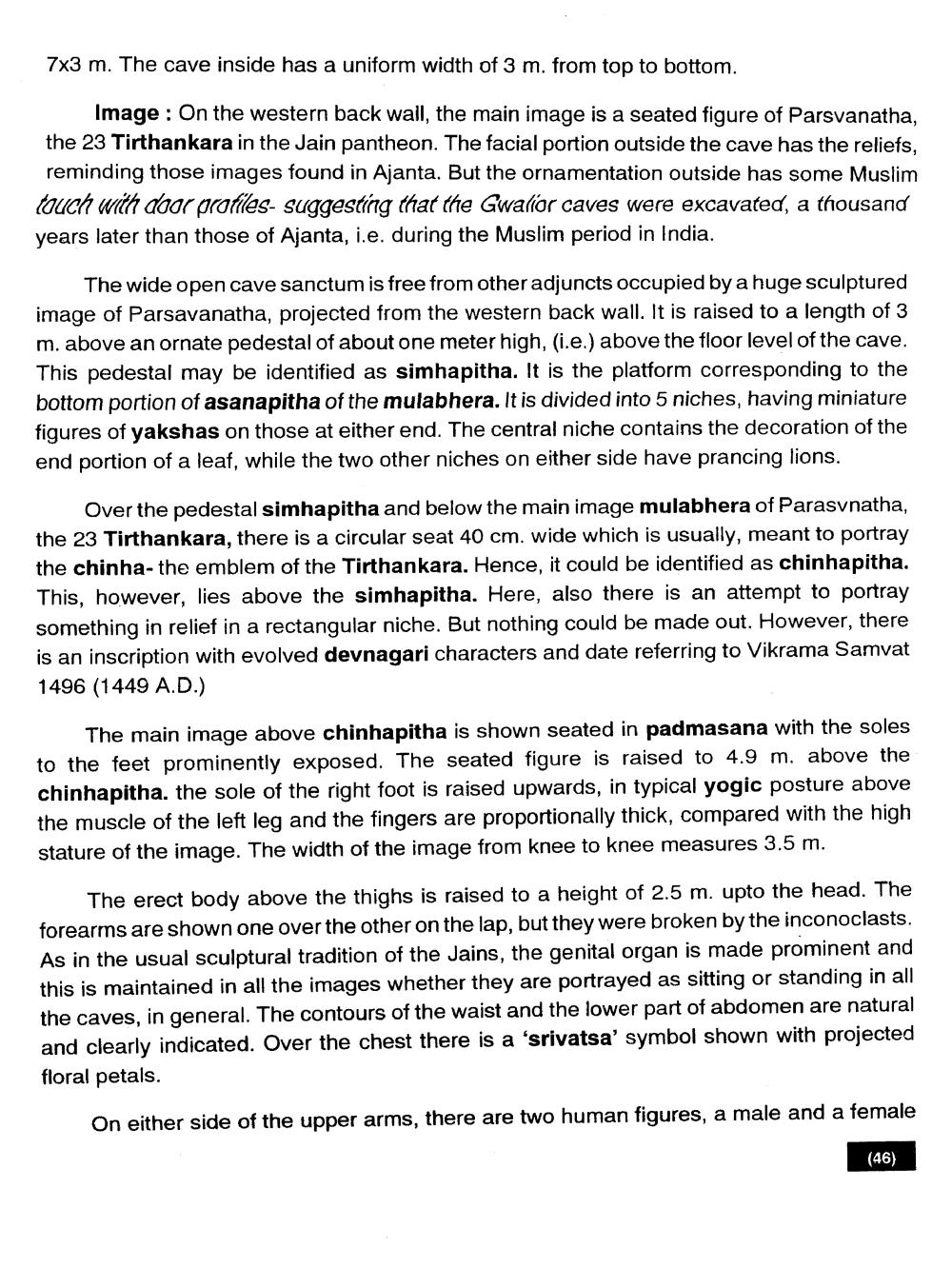________________
7x3 m. The cave inside has a uniform width of 3 m. from top to bottom.
Image : On the western back wall, the main image is a seated figure of Parsvanatha, the 23 Tirthankara in the Jain pantheon. The facial portion outside the cave has the reliefs, reminding those images found in Ajanta. But the ornamentation outside has some Muslim touch with door profiles- suggesting that the Gwalior caves were excavated, a thousand years later than those of Ajanta, i.e. during the Muslim period in India.
The wide open cave sanctum is free from other adjuncts occupied by a huge sculptured image of Parsavanatha, projected from the western back wall. It is raised to a length of 3 m. above an ornate pedestal of about one meter high, (i.e.) above the floor level of the cave. This pedestal may be identified as simhapitha. It is the platform corresponding to the bottom portion of asanapitha of the mulabhera. It is divided into 5 niches, having miniature figures of yakshas on those at either end. The central niche contains the decoration of the end portion of a leaf, while the two other niches on either side have prancing lions.
Over the pedestal simhapitha and below the main image mulabhera of Parasvnatha, the 23 Tirthankara, there is a circular seat 40 cm. wide which is usually, meant to portray the chinha- the emblem of the Tirthankara. Hence, it could be identified as chinhapitha. This, however, lies above the simhapitha. Here, also there is an attempt to portray something in relief in a rectangular niche. But nothing could be made out. However, there is an inscription with evolved devnagari characters and date referring to Vikrama Samvat 1496 (1449 A.D.)
The main image above chinhapitha is shown seated in padmasana with the soles to the feet prominently exposed. The seated figure is raised to 4.9 m. above the chinhapitha. the sole of the right foot is raised upwards, in typical yogic posture above the muscle of the left leg and the fingers are proportionally thick, compared with the high stature of the image. The width of the image from knee to knee measures 3.5 m.
The erect body above the thighs is raised to a height of 2.5 m. upto the head. The forearms are shown one over the other on the lap, but they were broken by the inconoclasts. As in the usual sculptural tradition of the Jains, the genital organ is made prominent and this is maintained in all the images whether they are portrayed as sitting or standing in all the caves, in general. The contours of the waist and the lower part of abdomen are natural and clearly indicated. Over the chest there is a 'srivatsa' symbol shown with projected floral petals.
On either side of the upper arms, there are two human figures, a male and a female
(46)




